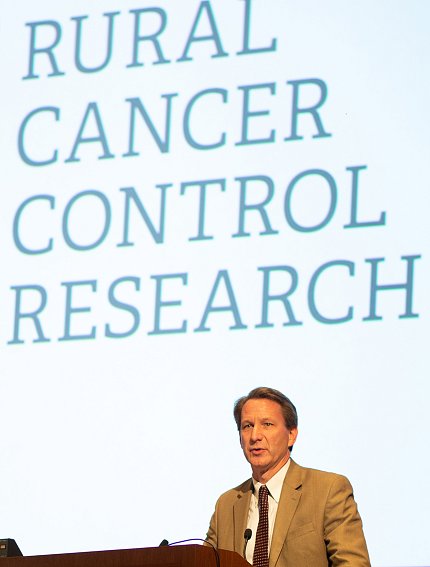NCI Accelerates Rural Cancer Control Research

Why are death rates from cancer decreasing much more slowly in rural areas compared to urban areas—and the rates are already nearly 10 percent higher in rural areas? Put another way: Why is this cancer disparity getting worse and what can be done to address this divide?
More than 250 researchers, clinicians and community partners from a wide range of backgrounds and expertise gathered at NIH recently to address these and other questions regarding cancer disparities in rural populations. The objectives of the meeting, Accelerating Rural Cancer Control Research, were threefold: to identify gaps in research and practice; to build partnerships across the country with various health-related entities (federal, national and local) to address challenges and disseminate solutions; and to highlight and identify methods to address competing and common agendas of clinics/providers, researchers and community/patients.
Dr. Shobha Srinivasan, health disparities research coordinator in NCI’s Division of Cancer Control and Population Sciences, opened the meeting. She said that as she worked to prepare for launch of the Accelerating Rural Cancer Control Research program, it was humbling “to see and to understand what is really happening in our rural communities across America and the challenges they face—and the resilience that they show in the face of all those challenges.”
NCI director Dr. Ned Sharpless noted that rural cancer control is not a new area of research for NCI, given that institute programs have focused on rural health for more than 20 years. So why have this meeting now? “We have better data,” said Sharpless. “Better sources of data, better aggregation of data and we’re involving researchers who can use this data with different expertise.
“No one approach or no one idea is going to solve this disparity,” added Sharpless. “Just as the biologic heterogeneity of cancer means that no single treatment can extinguish all tumors, no single intervention or even suite of interventions can address the cancer disparities we see in rural America.”
Presentations and discussions provided attendees with a glimpse of health disparities in Delta, Appalachia, Alaska, Hawaii, Southwest, Colonias, Reservation and Frontier communities, illuminating circumstances and variations in rural regions throughout the country.
Meeting presenters emphasized how small investments can lead to big gains, and the power of partnership and collaboration. As Dr. Robert Croyle, director of NCI’s Division of Cancer Control and Populations Sciences, said: “We want to build stronger bridges amongst those who do work in rural health, and facilitate interdisciplinary cross-sectional collaboration…whether it’s in a clinical or research setting, or a local or federally funded center, such as those supported by HRSA’s [the Health Resources and Services Administration] Federal Office of Rural Health Policy, which has played a long-standing role in this area.”
Speakers also stressed the importance of strong infrastructure and of intervening simultaneously at multiple levels—at the individual/patient level, at the doctor/health care provider level, at the facility level, at the network level and at the health department level. The need to work with communities to provide services that they’re interested in and from which they’ll benefit was highlighted repeatedly, with numerous examples given of programs that brought sustained health improvements.
Throughout the conference, images were shared of the rural areas on which the meeting focused. The hope is that the conference, the resulting discussions and collaborations and the RFA (request for applications) to incentivize more research in this domain will propel advances in addressing rural health disparities, so that living in these rural communities does not mean living with poorer health.
